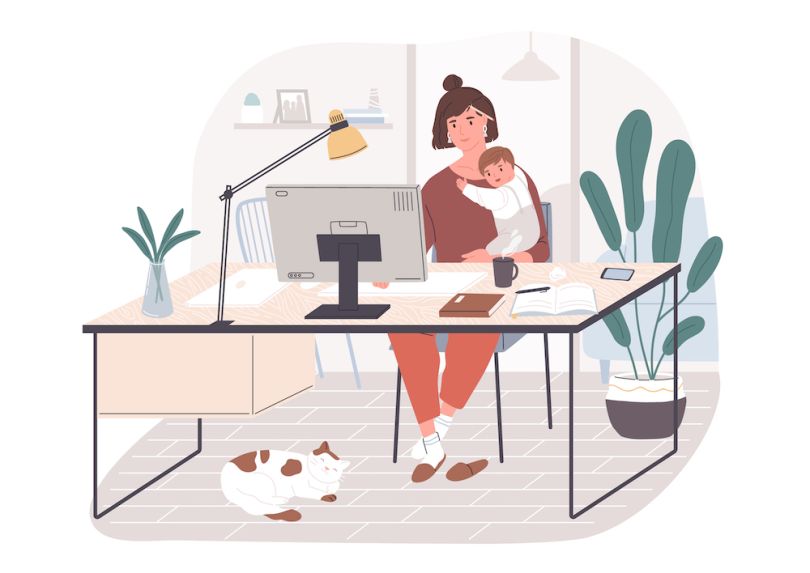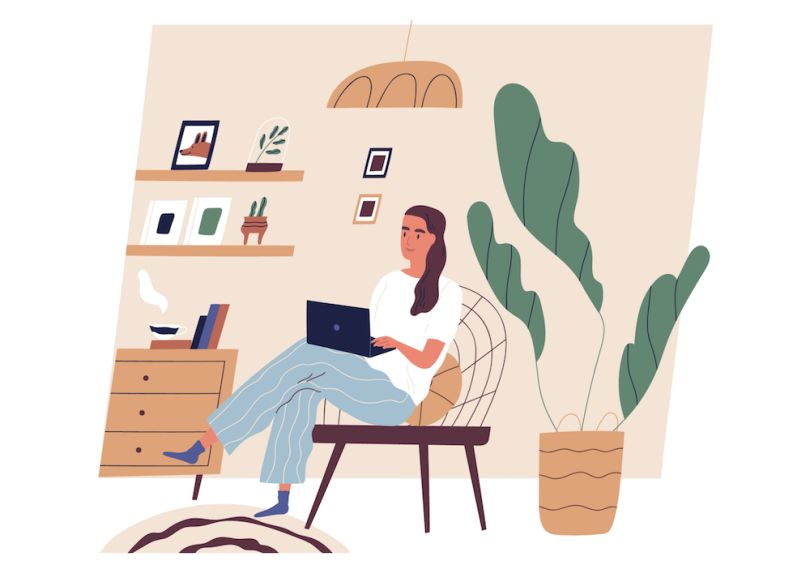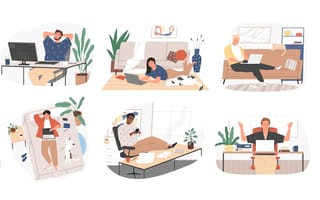Millions of people are suddenly working remotely. Doing their part to curb the spread of COVID-19, they’re holed up at home, treating their living spaces as temporary offices. Dinner tables are now desks. Barking dogs have replaced ambient office noise. Hushing squawking toddlers is the new water cooler banter.
As we’ve traded in-person meetings for video calls, facilitated through products like Zoom, Microsoft Teams and Google Hangouts, it’s become the new normal to share not only our screens but also our (often loud and messy) living quarters. But few of us were prepared to invite our colleagues into this environment, and adjusting to work-from-home etiquette on the fly has caught many of us off guard.
Thankfully, some companies have spotted this budding problem and stepped up to the plate, offering software solutions that make video conferencing more tolerable for us all.
Tips for Video Conferencing
- Eliminate background noise
- Remove on-screen distractions — especially when screen sharing
- Turn off notifications and focus on the call at hand

AI THAT REMOVES BACKGROUND NOISE
Recently, on a team video call, I tried sneaking a handful of potato chips while my mic was unmuted. Coworkers broke out into laughter, prompting one to joke, “Are you making an ASMR video for us?” Apparently my mic picked up the chip bag’s crinkling sounds — far too well.
A product like Krisp would have spared me the embarrassment. Krisp is an app, founded in 2018 by Arto Minasyan and Davit Baghdasaryan, that uses deep learning to “mute” background noises in real time. It can be activated as a microphone and speaker for your device’s conferencing apps, meaning you could take a call with a shrieking infant or crunchy snack nearby and your coworkers would remain none the wiser.
In order to work, Krisp had to collect thousands of hours of audio — clean, studio-quality voice recordings as well as annoying background noises — and feed it into a neural network, which is trained to tell the two types of sound apart. That’s then used to create a sort of layer that is placed in between your microphone and conferencing app. During a call, Krisp leaves the human voice intact while filtering out everything else.
Baghdasaryan, cofounder and chief executive officer, credits his team of mathematicians and physicists with pulling off this tricky technical challenge.
“Dealing with audio is really difficult. Our ears are very sensitive, they're very different from person to person and very sensitive to error,” he told Built In, noting that the company’s secret sauce is its mathematical formula that allows it to separate unwanted noise from human voice without leaving behind sonic artifacts.
“Our users are telling us that this just makes their life easier, the current situation easier.”
Though it’s been around for more than a year, Krisp just recently exploded in popularity, due to the sudden influx of workers who went remote and needed a way to shield coworkers and clients from disruptive sounds. Baghdasaryan estimates that the app has experienced roughly a tenfold increase in installations in recent weeks. “Pretty much every metric is going north and growing exponentially for us,” he said.
Even with the unexpected uptick in usage, Krisp’s servers are doing just fine and have hummed along without a hitch. The app processes all the audio locally, right on the user’s device; it doesn’t send anything back to its servers (even though that audio could be useful as training data).
“Our product is architected very differently and so even if we have, like, 10 million users, the impact on our infrastructure is going to be pretty minimal,” Baghdasaryan said. “It’s a good position to be in.”
People that have suddenly found themselves working from home, surrounded by distractions that are hard to control and even harder to predict, may not be able to afford professional-grade, noise-cancelling headphones. Krisp is positioning itself as a superior, more economical alternative.
Baghdasaryan admits that his company is being given a once-in-a-lifetime opportunity that fledgling startups only dream of. But he remains focused on providing value to people who need it, many of whom are affected by the coronavirus. Last week, Krisp introduced a free-to-use tier for the next six months, made its app free for all students, hospital and government workers, and reduced its premium-tier prices.
“Our users are telling us that this just makes their life easier, the current situation easier,” Baghdasaryan said. “And that makes us very proud.”

MICROSOFT MAKING MOVES
Krisp appears to be alone in its category — Baghdasaryan couldn’t name a single direct competitor — but won’t remain so for much longer.
Microsoft recently declared that it’s getting into the video-conference-noise-suppression game. In a blog post published on March 19, Jared Spataro, corporate vice president of Microsoft 365, wrote that the next iteration of Microsoft Teams, the company’s communication and collaboration platform, will include “real-time noise suppression” to help “minimize distracting background noise.”
A Microsoft spokesperson told Built In that the new Teams feature will be powered by AI and can automatically remove unwanted background noise during conference calls. It’s slated to release later this year.
Microsoft Teams already offers the ability to blur their background visuals on video conferences. It uses facial recognition technology to differentiate between users and what’s behind them. So you can keep your pile of dirty laundry, risqué artwork and interrupting children behind you all you want — when you activate the feature, your coworkers will only see a blur.
MUZZLING THE AWKWARD MOMENTS
With teams scattered, virtually collaborating on a doc or a deck can be tricky for the uninitiated. So can giving presentations, which, if we’re being honest, typically come with technical difficulties already baked in. Nobody needs the added stress of humiliation.
Installing an app that eliminates a potential professional embarrassment, however unlikely, is an attractive value proposition for a disoriented workforce.
That’s why, three years ago, two of Bryan Jones’ buddies pitched him an idea for an app that would automatically disable a computer’s ability to receive notifications whenever it was being used for screen sharing.
Their lightbulb moment came when one sent an uncouth text about a client to the other, which popped up as a visible desktop notification — as he was screen sharing a presentation with said client.
The two friends just needed Jones, a Mac developer, to build it. So he did. That night.
That was the summer of 2017, when the app, which they named Muzzle, went semi-viral (it was Product Hunt’s #1 product that month). And while Jones doesn’t keep tabs on the app’s analytics, he has noticed in recent days that his email inbox and Twitter mentions have blown up, indicating, perhaps, that newly remote workers are discovering and sharing his app.
When you pop Muzzle’s hood, Jones says, it’s pretty straightforward. When a Mac OS begins the screen-sharing process, Apple uses something called a private API to disclose that event. That disclosure triggers Muzzle, which then switches on the Mac’s Do Not Disturb mode. That blocks notifications until screen sharing ceases.
What is it about Muzzle that resonates with remote workers? It’s designed for people who forget to turn off notifications before they hop on a screen-sharing presentation, and would rather not have their coworkers or clients see every text, email or alert visibly pop up (a common setting for Apple computers).
Given that many are adjusting to their new WFH workflows, it’s an easy wrinkle to overlook. Installing an app that eliminates a potential professional embarrassment, however unlikely, is an attractive value proposition for a disoriented workforce.




